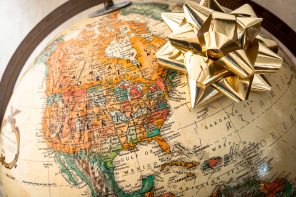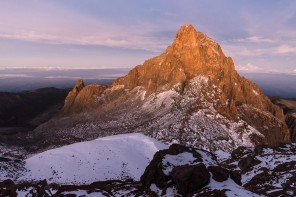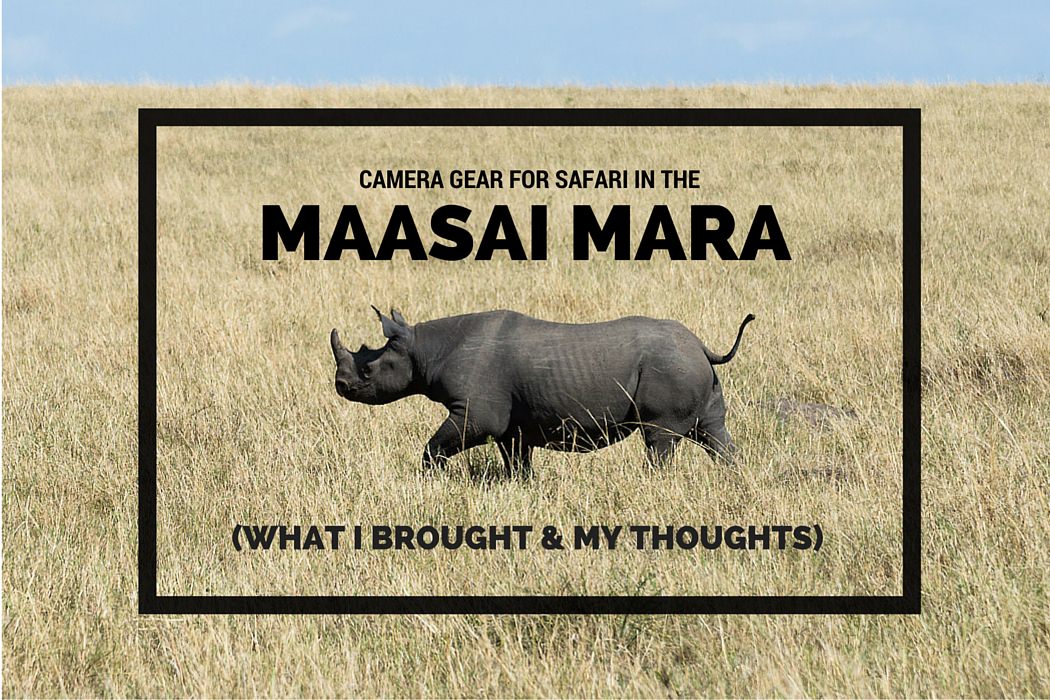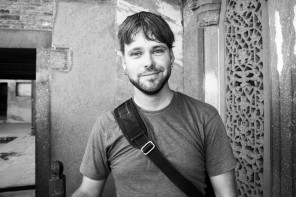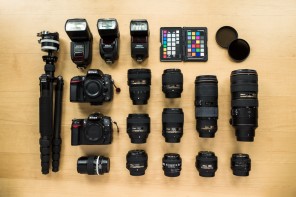Photography and photo gear are concepts inextricable from one another, and most photographers have a healthy (or, as often, unhealthy) relationship with equipment. Like many of us, I too have had my gear whore/collector moments and amassed a fair amount of gear while pursuing the optimal balance of image quality, ergonomics and outright pleasure felt in the act of image creation.
PHOTO GEAR FOR TRAVEL – CONSIDERATIONS
Thing is, I usually can’t bring all my photo gear with me when I travel, and I wouldn’t want to either. Carrying everything one owns is a heavy, bulky, time consuming, potentially expensive loss while on the road. If I’m traveling independently for pleasure, I generally stick to the following formula:
- (1) interchangeable lens camera body + (3) lenses for said camera body
- (1) fixed lens pocketable camera
- (1) travel tripod with ball head
- (1) backpack (or day bag) that I can shoot out of, and will accommodate all gear at once if needed
- Assorted media, batteries, cleaning supplies and misc as necessaryOptional: (1) GoPro or other “crash” camera
Below is my used and recommended gear list for independent travel with a focus on photography. This isn’t what I necessarily recommend that YOU use or carry, as your style of photography (and your style of travel) should dictate the equipment you choose and use. And if you’re confused about your own photographic objectives and style, stop reading about photo equipment NOW and go shoot instead, so you can start figuring out your style (it’s going to take time)! Remember, it’s not about equipment, it’s about photographic output.
**See the Complete Photo Gear List for other gear not noted here that stays home when I travel, or things I have previously owned/shot.**
CAMERA BODIES
DSLR: Nikon D610 24.3 MP Full-Frame DSLR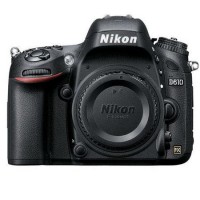
The Nikon D610 gives great full frame image quality at a very fair price. The 24.3 megapixel sensor in this camera gets absolutely amazing results in the way of dynamic range and detail, and fares well in low light as well. The body (sans battery/card) weighs in at 760 grams – so it’s not exactly featherweight, but it’s not an unwieldy monster either.
I only have a couple of very minor hangups with the Nikon D610, both related to its autofocus system. First: the AF coverage area is really quite small on this body, which means I often must use the “focus and recompose” technique (not a terrible hassle, but a consideration), and that AF tracking of moving subjects can be quite frustrating. Second: the AF of the D610 occasionally has a bit of trouble acquiring correct focus in low light situations.
Potential solutions to the above two problems: if you truly need a larger AF area (action sports shooters and birders, for example), consider the Nikon D750 (full frame body) or the Nikon D500 (crop frame body), both of which have larger AF coverage areas and can lock focus in less light than the D610 due to updated AF modules.
“Pocketable” Camera: Ricoh GR (16.2 MP)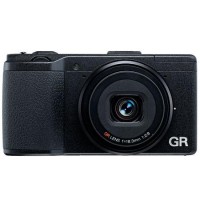
I picked up a Ricoh GR in early 2015 (US $450 used at the time) and LOVE IT. It’s a 16 megapixel body with a fixed 28mm equivalent lens (no zoom) with a relatively fast f2.8 maximum aperture. It’s lightweight (244 grams) and small (4.6 x 2.4 x 1.4″ / 11.7 x 6.1 x 3.6 cm) – almost “pocketable” but boasts a sensor the same size as a consumer DSLR (APS-C). The sensor size makes it capable in low light (though, in fairness, its auto focus sometimes struggles in these conditions), and the size makes it super suitable for street photography applications as well as social situations in which you don’t want to jam a DSLR in someone’s face. Highly recommended – pick one up used.
Underwater / Crash Camera: GoPro Hero 3+ Black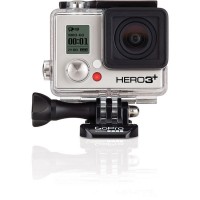
I’m not a regular GoPro user because I find that it lacks still/video image quality in anything other than the brightest sunlight, and even in said conditions, still in no way compares to the output of my “real” camera(s). But I don’t use the GoPro that way anyway – to me, this little camera is a way to carry a waterproof wide HD video camera that can be used to document virtually any situation, and takes up almost no space in one’s pack. I use mine for scuba diving, rafting, and other wet and dirty activities during which I wouldn’t want to risk my other cameras. Note that if you want to use this camera in water, you MUST get in the practice of using anti-fog inserts inside the waterproof housing! **At the time of writing the Hero 3+ Black was a discontinued item. Consider an updated GoPro model, or other action camera bodies, as the market is flooded with them at this point.
LENSES FOR DSLR BODY
Choosing focal lengths / angles of view is a very personal pursuit. If I am traveling “light,” meaning with three lenses or less, I’ll generally start with a flexible 3-lens combo (wide, medium, tele) for my DSLR and tailor needs from there.
LENS #1 of 3 – ULTRAWIDE/WIDE: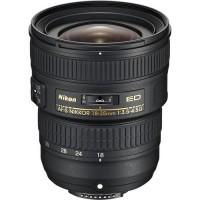
Nikkor 18-35mm f/3.5-4.5G ED – this lightweight (385 grams) rectilinear ultrawide zoom is less of a compromise than you’d think. I find it quite sharp wide open and have no qualms with my choice of this over Nikon’s other wide angle zooms like the 16-35mm VR and 14-24mm, which are much bigger and heavier by comparison. Distortion on this lens can be a little distracting if you’re shooting brick walls all day, but this can be corrected fairly well in Lightroom and doesn’t pose serious problems for real-world usage.
LENS #2 of 3 – FAST “WALKAROUND” / “LOW LIGHT” PRIME LENS: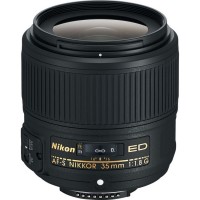
Nikkor 35mm 1.8G ED, or the Nikkor 50mm 1.8G. I know an additional 35mm prime seems redundant when you carry the 18-35mm (and even more so if you’re also carrying a Ricoh GR with its 28mm angle of view), but the 50mm perspective is a bit boring to me, so I’d rather just have a fast 35mm most of the time. Plus, the 35mm focuses closer than the 50mm, which is nice for small details (though by no means does it approach macro capabilities).
**Note: I also own and have shot the Nikkor 35mm f/2D and Nikkor 50mm 1.8D lenses, which are both lighter and smaller than the above G-type lenses – but I have found each of them optically inferior to their updated counterparts.
LENS #3 of 3 – PORTRAIT/SHORT TELEPHOTO: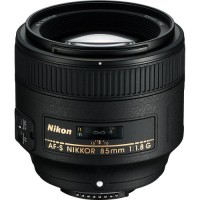
My current favorite in this category is the Nikkor 85mm 1.8G, which is lightweight (350 grams) and very sharp, especially when stopped down a bit. The 85mm focal length offers me a bit of image compression and the fast maximum aperture helps for subject isolation. This is a great lens for portraits or for short-telephoto street photography. And yes, I realize 85mm as a “long” lens this doesn’t give me any real “reach” on the telephoto side. When I prefer reach over speed, I carry a Nikkor 70-200mm f4 instead of the 85mm. I should say: the 85mm and the 70-200mm are very different tools, and despite focal length overlap, one doesn’t ever truly replace the other.
NOTE: ADDITIONAL LENSING FOR SPECIFIC NEEDS:
The above lens assortment gets me by in 90% of situations. But if I need a long telephoto, or a specific macro or tilt-shift or the like, I can always rent from places like LensRentals or BorrowLenses. Rates are totally fair, and they ship to you. Sites like these can be great helps for gearing up for trips that have specific photographic aims, like safaris (100-400mm or 150-600mm, anyone?).
CAMERA BAG / DAY BAG
I generally choose one of the below bags for carrying and protecting my photographic equipment depending on the nature of my trip.
SMALLISH BACKPACK THAT TRAVELS WELL: Lowepro Photo Sport 200 AW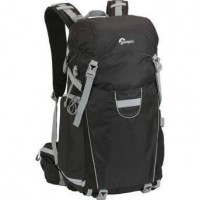
The Photo Sport 200 AW’s is a nice balance of camera backpack and generalized day bag. The padded camera compartment will (somewhat tightly) fit a midsize DSLR with three smallish lenses, and the top compartment can accommodate your jacket, guidebook and other miscellaneous items. I’ve fit water bottles as big as 1.5 liters in the water bottle sleeve on the side, and you can strap a tripod on the bottom if you like. The hydration sleeve fits an 11″ MacBook Air with room to spare as well (or a hydration sleeve).
My only major gripe with this particular bag is how poorly padded its shoulder straps are – they’re poorly designed for the amount of weight you’ll likely put in the bag, and I’m considering adding padding myself with a bit of home surgery.
Also, please note that you will not be able to fit a DSLR with mounted 70-200mm f/2.8 lens in the camera compartment of this bag. Nope.
UNASSUMING SHOULDER BAG: Domke J-803 Digital Satchel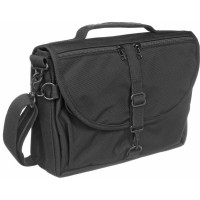
The J-803 is a lightly-padded camera satchel with an understated appearance that fits a DSLR and 2-3 lenses, and offers organization for a variety of other trinkets, be they photographic or personal. It’s not fully waterproof, but its ballistic nylon will shed water to a point. For lightweight / casual photography I carry the J-803, my Ricoh GR, and a full-frame DSLR with a mounted 85mm lens. This bag is MUCH easier to use for street photography than the backpack, as I can get in and out of it in a flash and move through crowds with greater efficiency than with any backpack.
BIGGER BACKPACK FOR PACKING MORE STUFF: Think Tank Photo Streetwalker HardDrive
This is what I bring when I’m going HEAVIER on photo gear. By that, I mean 4-6 lenses, maybe a second camera body, a flash or two, camera accessories and a 15″ laptop. It’s incredibly well-built and super comfortable even when fully loaded. Think Tank’s rolling bag series are also quite functional and appealing for carrying a fair amount of gear.
OTHER GEAR I REGULARLY CARRY
TRIPOD AND HEAD
- TRIPOD LEGS: Sirui T-1205X Carbon Fiber Tripod. These carbon fiber legs are durable, lightweight (1.8 lbs without head) and fold down to just 13.4″ long.
- BALL HEAD & CLAMP: Arca Swiss p0 ball head with a Really Right Stuff B2-40-LR-M6 Lever-release clamp. Super steady and reliable ball head / clamp combo. You may scoff at combined price tag – around $400 total for clamp and head alone – and I did too, until my lower-cost heads/clamps failed me. Worst experience: the time my DSLR fell from full tripod height onto concrete thanks to a faulty clamp, which ended up damaging the camera body and mashing the hot shoe in. So now I use a reliable clamp!
- TRIPOD PLATES COMPATIBLE WITH MY CLAMP: I bring two Arca Swiss compatible plates along, just in case I lose one along the way.
FILTERS
- Circular polarizing filter – B+W 77mm Kaesemann Circular Polarizer MRC Filter (check the front filter thread size on your lenses before purchasing filters please)
- Neutral Density (ND) filter – Hoya Pro 1D 16x (4-stop) Neutral Density Filter (77mm) (check the front filter thread size on your lenses before purchasing filters please)
- Step-up rings for filter usage with all lenses
- Additional backup lens caps for most commonly used lenses
BATTERIES
- (1) camera battery charger for Nikon D610 batteries
- (3) total camera batteries for Nikon D610
- (1) camera battery charger for Ricoh GR
- (3) total camera batteries for Ricoh GR
- (1) camera battery charger for GoPro
- (3) total camera batteries for GoPro
- Battery Pouches as needed, like these from Think Tank Photo
MISCELLANY
- MEDIA: plenty of SD cards by Lexar, Sandisk, Panasonic, Transcend. UHS-1 Class 10 or better preferred, 32GB and bigger. GoPro requires micro SD cards.
- WHITE BALANCING ACCESSORIES: Expodisc White Balancing Filter (77mm) and/or a grey card like the WhiBal G7 White Balance Pocket Card. I generally prefer the latter.
- LENS CLEANING: (2) microfiber lens cleaning cloths and a rocket blower like the Giottos Rocket Blaster (LARGE size preferred)
- CAMERA STRAP: Peak Design “Leash” convertible camera strap. Not the world’s most comfortable, but packs down to nothing, and is easy to remove from camera for tripod shots on windy days.
- CAMERA “CAPTURE CLIP”: Peak Design “Capture Pro” clip with Arca Plate. Useful for when you want to keep your camera accessible while trekking.
- ANTI-FOG INSERTS: GoPro Anti-Fog Inserts. 100% necessary for use with the water tight housing.
- CARD READER: USB 3.0 SD/micro SD card reader. Most any brand will do.
This may seem like a lot of gear to some, and like nothing at all to others. For me, it’s just a starting point for what I am willing to carry to balance photographic output with personal enjoyment while traveling.
A FEW OTHER NOTES:
- I don’t often carry speedlights while doing multi-month independent trips. Speedlights require batteries, and batteries require chargers, and the weight and bulk of it all adds up quickly. Ideally I would carry one speed light though.
- I don’t usually carry a midrange zoom such as a 24-105mm, 24-120mm (et al) because I generally prefer fast primes to slower zooms. I don’t often carry a 24-70mm f/2.8 lens while traveling because they’re big and heavy, and the variance between angles of view on the wide and long ends is not particularly significant. All of these lenses have their place of course, I just don’t usually carry them if I’m traveling independently.
- I don’t particularly enjoy shooting still photographs on cameras with sensors smaller than APS-C (crop crame) size. I shot micro four-thirds for a year and just never fell in love with the image quality. I was shooting on an Olympus OM-D E-M1 for the record.
- I have not shot Sony E-mount full frame (A7, etc) yet but don’t feel compelled to build a new camera package on a different lens mount at this time. I’m happy where I am.
- I have shot plenty of Canon gear, and I like both brands for what they are. I simply started with Nikon and now own mostly Nikon glass. Quite practical to keep shooting Nikon at this point.
This isn’t all the photo gear I own or have owned – click here if you’re curious about the rest of my gear.
This post was updated May 6th, 2015.


